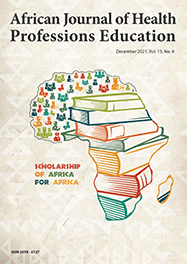Research

Learning styles of physiotherapy students and teaching styles of their lecturers in undergraduate gross anatomy education
Abstract
Background. Anatomy is essential to prepare physiotherapy students for future clinical practice. Student learning styles and lecturer teaching styles may influence learning outcomes.
Objective. To determine if the learning style of this student population is consistent and compatible with lecturers’ teaching styles for better learning outcomes.
Methods. A descriptive cross-sectional study was undertaken during 2015 and 2016. The Grasha-Riechmann learning style scale (GRLSS) and Grasha-Riechmann teaching style scale (GRTSS) were used to measure learning styles of two consecutive physiotherapy student cohorts and teaching styles of their anatomy lecturers, respectively.
Results. Student samples were small (group 1: N=59 and group 2: N=54), but response rates high (n=39; 66.1% and n=43; 81.5%) in 2015 and 2016, respectively. Mean Likert scores for GRLSS indicated that the most popular choice for learning style was the dependent style (mean (standard deviation) 3.81 (0.75)) for group 1 and the independent style (3.68 (0.61)) for group 2. Female students preferred the dependent style (group 1: n=12; 30.8% and group 2: n=10; 23.3%) and male students the participant style (group 2: n=6; 14%) of learning. Lecturers scored highest in the expert category of teaching styles. Compatibility between learning and teaching styles was seen in both years based on comparisons made using teaching style clusters, where the identified GRLSS and GRTSS were grouped together and seen to fit into specific cluster categories.
Conclusion. Consistency in learning style choice was observed. A degree of cohesion between student learning styles and their respective lecturers’ teaching styles augured well for good interaction between staff and students.
Authors' affiliations
D A Shead, Department of Physiotherapy, Faculty of Health Sciences, University of the Witwatersrand, Johannesburg; and School of Anatomical Sciences, Faculty of Health Sciences, University of the Witwatersrand, Johannesburg, South Africa
R Roos, Department of Physiotherapy, Faculty of Health Sciences, University of the Witwatersrand, Johannesburg, South Africa
B Olivier, Department of Physiotherapy, Faculty of Health Sciences, University of the Witwatersrand, Johannesburg, South Africa
A O Ihunwo, School of Anatomical Sciences, Faculty of Health Sciences, University of the Witwatersrand, Johannesburg, South Africa
Full Text
Keywords
Cite this article
Article History
Date published: 2018-12-06
Article Views
Full text views: 3475




.jpg)
Comments on this article
*Read our policy for posting comments here